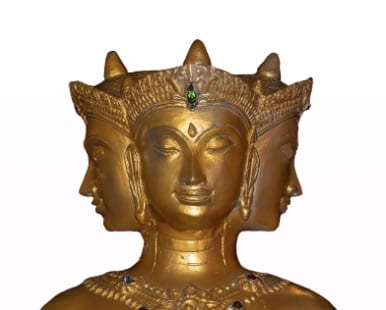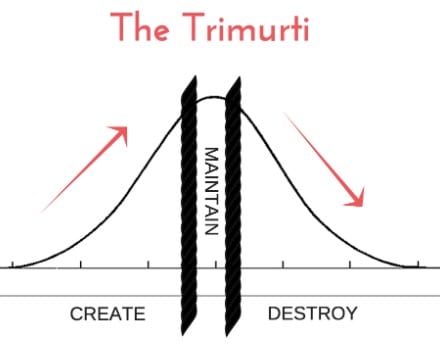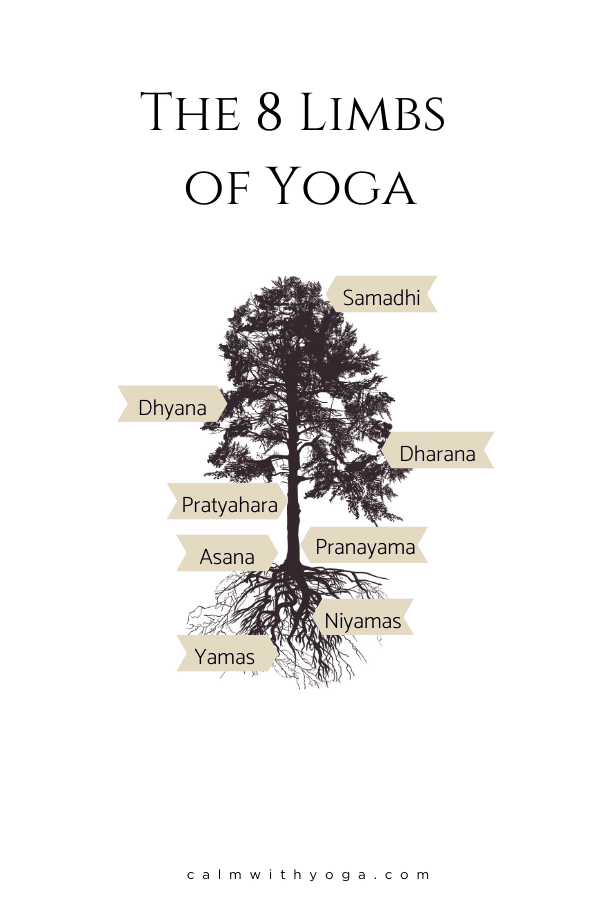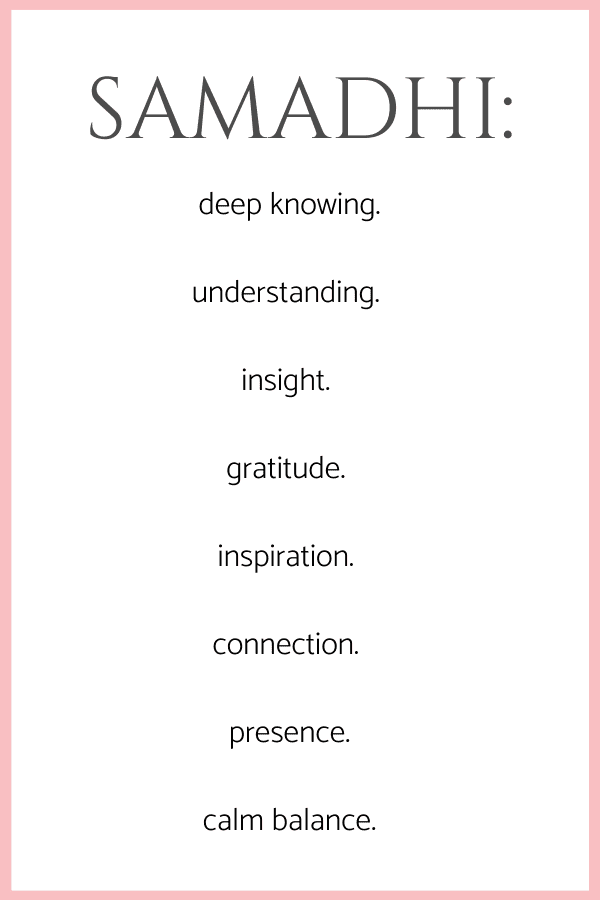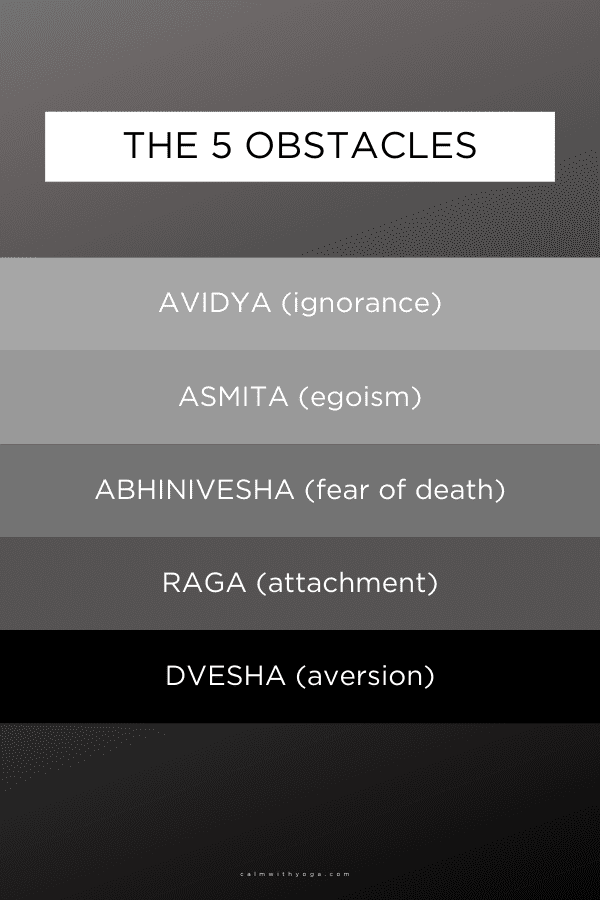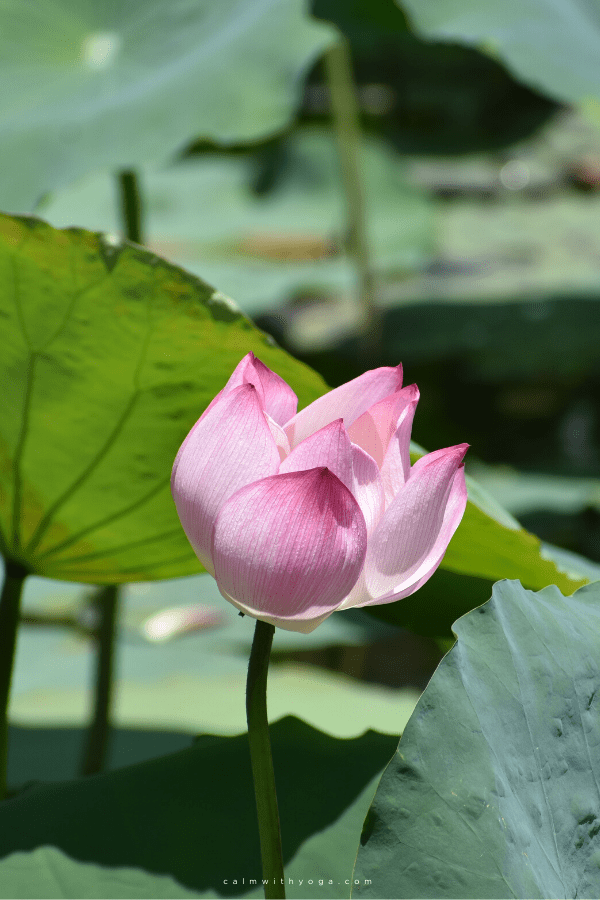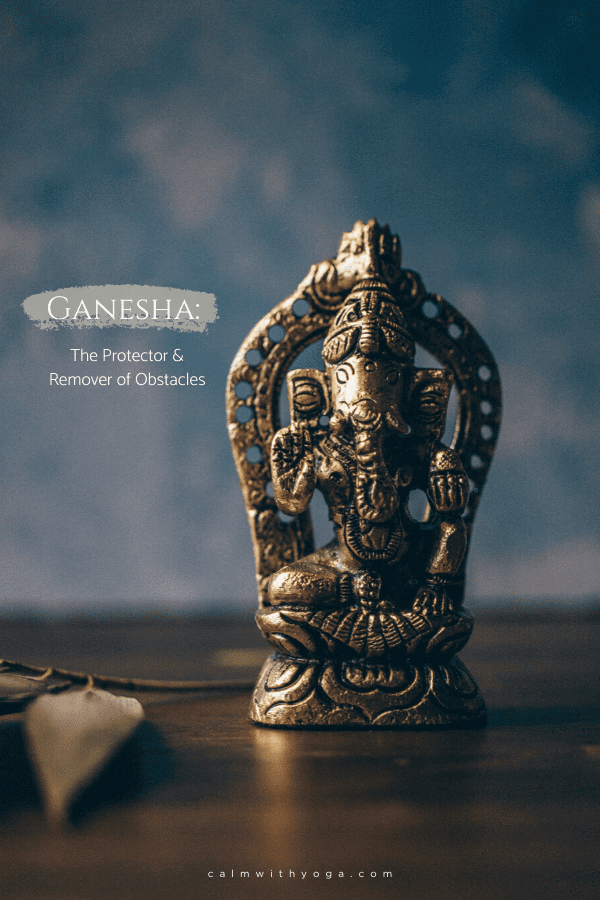When one sees this with wisdom, one turns away from suffering. – Buddha We struggle to let go. We struggle to accept. We struggle to adapt. Sometimes cling to people and hold on to relationships and dynamics even though deep inside we know it’s time to let go. Or we resist moving on or moving forward and embarking on new chapters. Or we may stubbornly hold on to old ideas and expectations, and like a triangle peg in a square hole, we try and try to make it fit. And so we end up exhausted, burnt out, tired, defeated, irritated, and disappointed… Because instead of flowing with the cycles of life we fight and resist. Instead of ebbing and flowing we deny what is because we have in our mind a picture of how we think it “should” be. The Yogic Path teaches us that we create our own suffering and we can also transform it. By deepening our yoga practice we can rise above the frustration, irritation, fatigue, and disappointment. Deepening our practice means taking yoga off the mat and beyond the poses and into the inner world, where true yoga begins.
In order to become a true Yogic Warrior and initiate (sadhaka) we must first be willing to go inwards and examine our perceptions and let go of whatever is limiting our inner vision. In the Yoga Tradition, a Sadhaka is a student that follows a particular sadhana (practice, lifestyle) that’s designed to help you cultivate the quality of calm balance and a clear and intuitive mind. The poses and postures commonly referred to as yoga are only the tip of the iceberg. As an initiate (sadhaka), you must go further than the poses and practice yoga in real life with heartfelt intention, deep inner focus, discernment, intelligence, and balanced perception. A powerful tool that can help you achieve more discernment and balanced perception is a concept called The Trimurti…
The Trimurti: The Yogic & Hindu trinity
In Yogic Philosophy and Hindu mythology, the Trimurti is a concept of trinity used to illustrate the natural (and cosmic) life cycle functions of:
Creation (growth, expansion) Preservation (balance) Destruction (decay, contraction)
Trimurti* means “three forms” in Sanskrit and is the culmination of three Hindu gods:
Brahma the Creator of life Vishnu the Preserver/ Maintainer/ Sustainer of life Shiva the Destroyer of life (aka Siva)
This triad of gods together united as one represents the supreme god/ divine force of the cosmos.
The Create – Maintain – Destroy cycles in your body:
We can live this principle by understanding that our lives are constantly moving through these three phases. At any given moment, something is being created, something is dying (transforming), and something is being preserved. When destruction happens, creation begins again. This is an endless, never-ending cycle. If we’re aware of the three phases, it will become easier to spot where we are in any given cycle. This can bring comfort and acceptance and help us release and detach. Every death of something brings about the birth of another thing. We can see this principle in action with the caterpillar, which goes into its own destruction process inside the cocoon, after which it re-emerges as a new being, the butterfly. We can see these cycles also in our own biology and our own bodies. Every day your cells die off and recycle themselves in processes known as apoptosis and autophagy. Every day your body creates new cells, new tissues. After 7 years you’re literally no longer the same person because so many of your organs and tissues have been reborn. Your body is wise and intelligent and has certain mechanisms in place to ensure a dynamic equilibrium is maintained and preserved in order for you to thrive. This is known as homeostasis in biology. According to the Science Museum UK: According to HowStuffWorks, skin cells make up about 16% of our body weight. (2) By the time you finish reading this sentence, 50 million of your cells will have died and been replaced by others. Some are lost through ‘wear and tear’, some just reach the end of their life, and others deliberately self-destruct. The life cycle of every cell is carefully controlled, so you should always have just the right number of each type of cell.” (1) Out of billions of skin cells, between 30,000 – 40,000 of them fall off our body every 60 minutes. You lose almost 1 million skin cells every 24 hours. (3) If our cells are constantly being created, maintained, and destroyed to be created again, then we can use the Trimurti concept to remember that when faced with a particular diagnosis or confirmation of any kind of dis-ease. Life is and always will be flowing according to these three phases. You cannot have the creation of something without something dying; you cannot have the destruction of something without the creation of another thing.
The Create – Maintain – Destroy cycles in your relationship dynamics:
This principle can also be seen in relationships. You might be in the destruction phase and you may resist this change and cling to what was. This creates a lot of friction and suffering. If we observe the concept of the Trimurti, then we can find comfort in the fact that while relationship dynamics with lovers, family, and friends may shift it’s part of a natural cycle of evolution. Eventually, the honeymoon period fades. At some point in time, you’ll likely need to let go of certain friendships and dynamics. It hurts, it’s uncomfortable, and it can be sad. And this is all part of the human experience. The Trimurti reminds us that destruction equals transformation and that for every thing, person, or experience that is destroyed something new will come to take its place. Have you ever heard of the phrase ‘nature abhors a vacuum’? It comes from the fact that empty voids and unfilled spaces go against the laws of nature and physics. Empty voids are eventually filled up with new creations in different forms. This goes for relationships, life chapters, careers, etc. You might have to really stop and look and discover what the new form is because often we’re so stuck in what it presently looks like that we miss the new form. (Hint: I know that when I’ve ended relationships in the past, the clear new relationship that has emerged has been the one with myself. After each breakup, I discover a new, deeper form of relationship with my own self.)
How Yoga Helps Us Transform Attachment & Fear of Loss:
Living the principle of the Trimurti helps ease our anxious grip on life; it helps us realize how and where we’re attached and fearful of loss. In the wisdom of uncertainty lies the freedom from our past, from the known, which is the prison of past conditioning. And in our willingness to step into the unknown, the field of all possibilities, we surrender ourselves to the creative mind that orchestrates the dance of the universe. – Deepak Chopra Attachment and fear of loss create tension and imbalance in the body and mind. When we cling to someone or something we contract our being and our physical body. We’re operating from our lower mind which is fear-based and one-sided.
Attachment keeps us from rising up the 8 limbs of yoga. The culmination of the yogic journey (aka 8 limbed path) is called Samadhi. Samadhi is a state of calm balance, bliss, full heartfelt gratitude and appreciation, and deep inner knowing. You can also think of Samadhi as embracing each of the phases of the Create-Maintain-Destroy life cycle. When you pair observance of the Trimurti with the yogic practice of Aparigraha you can start to transform your clinging and fear of loss. Aparigraha means non-attachment. It’s the antidote to attachment and clinging which in Yoga is called Raga. Raga (clinging) is a major cause of unnecessary suffering.
Raga forms part of the 5 Kleshas (afflictions) or 5 obstacles to reaching Samadhi: 1- Avidya (ignorance) 2- Asmita (egoism) 3- Raga (attachment) 4- Dvesa (aversion or hatred) 5- Abinivesah (clinging to life and fear of death) Practicing detachment is not an easy task for our ego as it likes to control as much as it can. But by taking small steps to practice radical acceptance we can slowly exert our detachment muscle over time.
Just remember that honoring the Trimurti cycles in your life and practicing non-attachment daily can open up your perceptions, awareness, and consciousness like the thousand petal lotus flower that so beautifully symbolizes Samadhi and self-realization in Yoga. The lotus flower grows in the darkness – underwater with its roots anchored in mud. Attachment, resistance, and clinging are the mud that keep you stuck in darkness. Trimurti and aparigraha are the forces that help you move upward to eventually rise above the water to bathe in the sunlight of awareness.
How To Use Hindu Deities As Avatars For A More Meaningful Life:
Hinduism and the Yogic Tradition is rich with mythological gods that represent concepts, metaphors, and ideas. We can use these myths to help us on our journey by invoking and embodying the qualities that these mythical avatars represent. Deva is the term used to refer to masculine deity energy (god) and Devi refers to the feminine deity energy (goddess). Both Devi and Deva mean “heavenly,” “divine,” “exuding excellence.” The following are a list of popular deities that you can use as avatars in your life: Krishna – Considered the most potent incarnation of Vishnu the maintainer, Krishna is also seen as the Lord of Compassion. Call upon him for sustenance, strength, and tenderness. Ganesha – Known as the Remover of Obstacles and the Lord of Protection and Power. Call upon him when you feel challenged, anxious, afraid, and stuck. Shakti – Known as the female complement to Shiva, the masculine transformer and destroyer. Together they form the divine union of consciousness. She represents feminine creative power. She’s sometimes referred to as the “Divine Mother.” Call upon her when you want to awaken your own creative and intuitive powers. Or when you want to summon the inner mother and nurturer within you. Kali – Mostly known as the goddess destroyer of evil forces, Kali is considered the most powerful form of Shakti. She’s the goddess of death and destruction while also being considered a strong mother energy and a symbol of fierce motherly love. Because of this, she’s regarded as the Mother & Protector of the Universe. Call upon her when you want to invoke your own fierce feminine energy. Or when you are struggling to embrace and accept the destruction phase in any area of your life. Saraswati – She’s the goddess of wisdom, learning, speech, and the arts. Call upon her when you want to invoke intuition, wisdom, discernment, and more effective communication. Lakshmi – She’s the goddess of abundance, prosperity, wealth, and fortune. Call upon her when you want to strengthen your magnetism to abundance, prosperity, good luck, blessings, and wealth of any form. Parvati – Parvati is the goddess of love, fertility, and devotion. Call upon her to strengthen your relationships or to enhance fertility and conception not just of actual babies but of other creations such as ideas, businesses, and projects. *The concept of Trimurti itself has been mentioned in the Vedas and other ancient texts of Vedic knowledge such as the Puranas, the Upanishads, and the Mahabharata. The deities are referred to as Lord Brahma, Lord Vishnu, and Lord Shiva. REFERENCES : (1) http://www.sciencemuseum.org.uk/whoami/findoutmore/yourbody/whatdoyourcellsdo/howoftenareyourcellsreplaced (2) http://www.bbc.co.uk/science/humanbody/body/factfiles/skin/skin.shtml (3) http://health.howstuffworks.com/skin-care/information/anatomy/shed-skin-cells.htm

